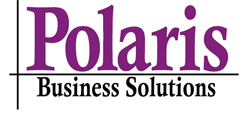Project Functionality Showdown: Acumatica vs. Dynamics SL
For businesses managing complex projects, having the right ERP system is crucial to ensuring efficient project tracking, budgeting, and resource management. Microsoft Dynamics SL has long been a go-to solution for project-based organizations, but as technology evolves, many companies are turning to Acumatica for its modern, cloud-based project management capabilities. Let’s take a closer look at how these two systems compare.
1. User Experience & Accessibility
Dynamics SL:
✅ On-premises or hosted deployment
✅ Navigation relies on a traditional menu-based structure
✅ Limited browser-based functionality
Acumatica:
✅ 100% cloud-based with mobile access
✅ Intuitive, customizable dashboards
✅ Universal search for quick access to project data
Key Difference: Dynamics SL requires remote desktop access or VPN for off-site users, whereas Acumatica’s cloud-based platform allows for anytime, anywhere access from any device.
2. Project Accounting & Financial Management
Dynamics SL:
✔ Basic project budgeting and financial tracking
✔ Revenue and expense recognition
✔ Project allocations
Acumatica:
✔ Advanced project budgeting with real-time updates
✔ Automated revenue recognition compliant with ASC 606
✔ Multi-currency and multi-company project tracking
Key Difference: Acumatica offers real-time financial visibility, while SL often requires manual updates or batch processing for accurate reporting.
3. Time & Expense Management
Dynamics SL:
✔ Timesheets and expense reports available in Business Portal
✔ Requires additional setup for mobile entry
Acumatica:
✔ Fully integrated mobile app for time and expense tracking
✔ AI-powered expense receipt scanning
Key Difference: Acumatica’s mobile accessibility simplifies time and expense tracking, reducing administrative work for project teams.
4. Project Reporting & Analytics
Dynamics SL:
✔ Basic project reports via SSRS
✔ Power BI integration for advanced reporting (separate setup required)
Acumatica:
✔ Built-in Generic Inquiries (GI) for real-time reporting
✔ Customizable project dashboards
✔ AI-driven insights and predictive analytics
Key Difference: Acumatica provides self-service reporting without needing SQL knowledge, whereas SL often requires IT or external consultants to modify reports.
5. Integration & Scalability
Dynamics SL:
✔ Can integrate with Microsoft tools (Excel, Power BI, SharePoint)
✔ Limited flexibility for third-party integrations
Acumatica:
✔ Open API for seamless integration with third-party tools
✔ Scales with growing businesses without performance issues
Key Difference: Acumatica’s open architecture makes it more adaptable to evolving business needs, while SL’s integrations often require customization.
Final Verdict: Why Businesses Are Moving to Acumatica
While Dynamics SL has served project-based businesses well for years, Acumatica’s modern, cloud-based solution offers greater flexibility, scalability, and ease of use. With real-time project financials, mobile access, and built-in reporting tools, Acumatica eliminates many of the manual processes that SL users often struggle with.
If you’re considering upgrading your project accounting system, now is the perfect time to explore Acumatica. Contact us today to see how it can transform your project management workflow!
